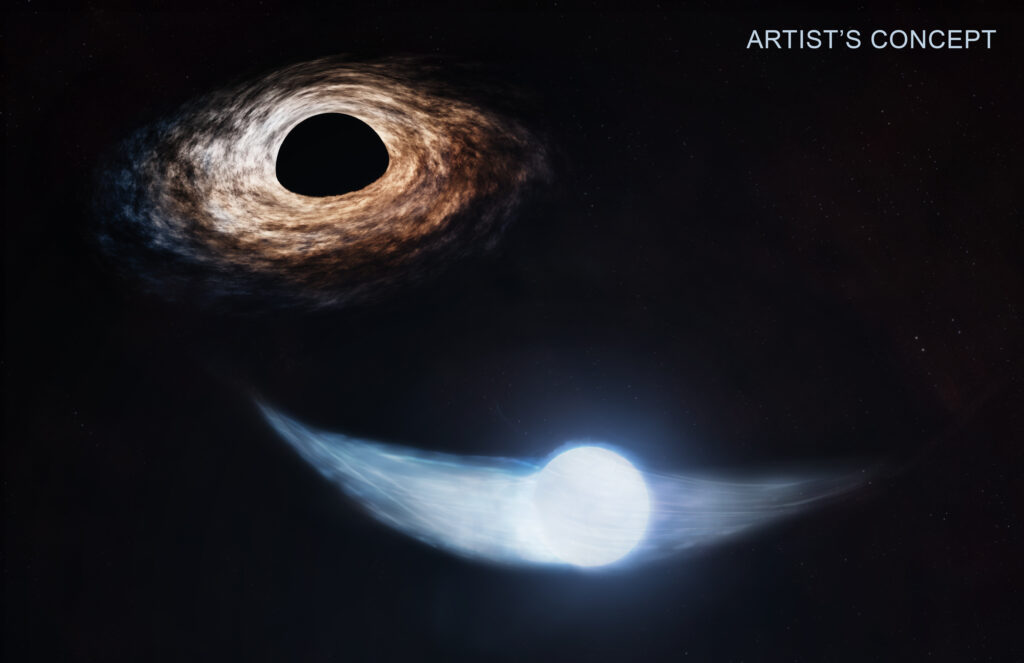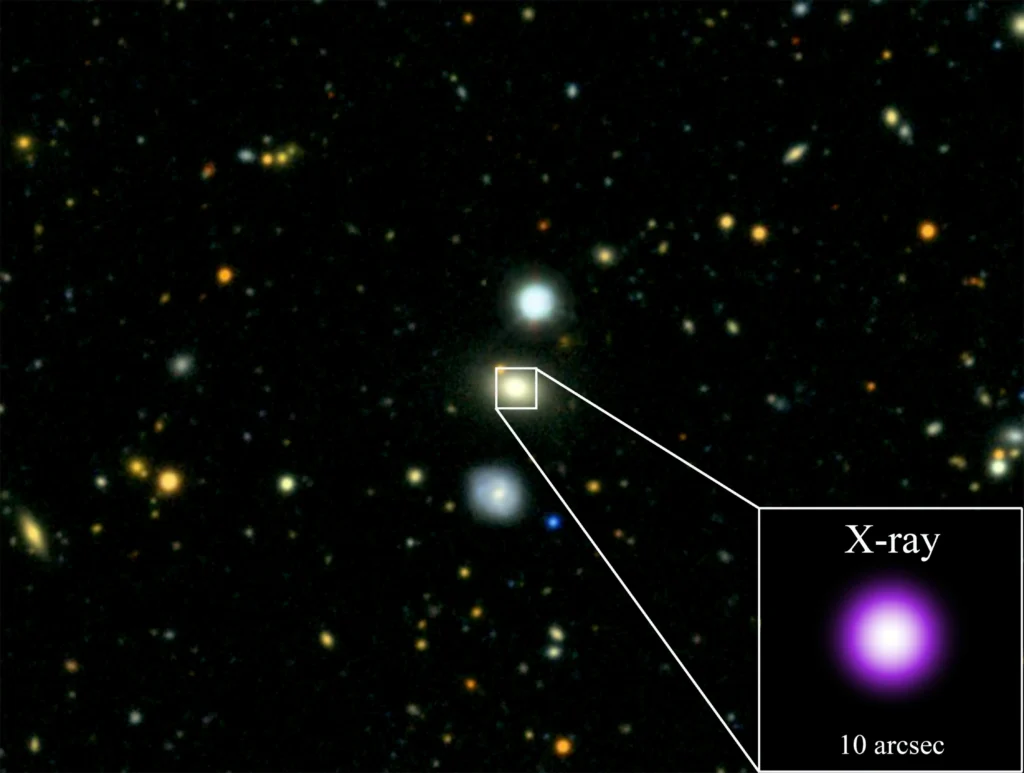A team of researchers from NASA has managed to create a meal schedule for the first time for a supermassive black hole. They were helped by data collected by the Chandra X-ray Observatory and the Swift and XMM-Newton telescopes.

The object of the study was the black hole AT2018fyk. Its mass exceeds the mass of the Sun by 50 million times, it is located in the center of the galaxy about 860 million light years from Earth.
Researchers first noticed AT2018fyk in 2018 when the ASAS-SN optical ground survey revealed that it had become much brighter. After observing it with the NICER instrument installed on the ISS, as well as the Chandra and XMM-Newton telescopes, the researchers determined that the brightness burst was the result of a tidal disruption event. Its source was thought to be a star that was completely torn apart after coming too close to the black hole. When the material of the dead luminary came close to it, it heated up and began to emit X-rays and ultraviolet radiation. These signals then faded away, suggesting that there was nothing left of the star for the black hole to stomach.
However, about two years later, suddenly AT2018fyk was much brighter again. In subsequent observations, astronomers concluded that the star most likely survived the initial gravitational capture by the black hole and then entered a highly elliptical orbit (meaning that the height of the apocenter is many times greater than the height of the pericenter).

Each time a captured star comes close to a black hole, tidal forces rip out some of its matter, forming two tidal tails. Later, this stellar material falls into the black hole and loses energy, causing a significant increase in the brightness of the X-ray emission. This process is repeated each time the star passes the pericenter of its orbit.
Based on what the team of astronomers learned about the star and its orbit, they predicted that the black hole’s second meal would end in August 2023. Chandra’s observations on August 14, 2023, showed a sharp drop in X-ray emission indeed, corresponding to the end of feeding.
According to astronomers’ calculations, if there is anything left of the star, the third meal of the black hole will begin between May and August 2025 and will last almost two years. It will probably be more of a “snack” than a full meal. The second time it absorbed less matter than the first, and the star keeps getting smaller and smaller.
According to NASA


